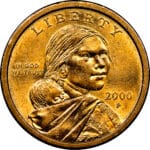This article explores the 1858 Flying Eagle cent, a key transitional coin in American numismatics. We’ll delve into its history, the different varieties, factors influencing its value, and how to spot counterfeits. This comprehensive guide provides collectors and enthusiasts with valuable insights into this fascinating piece of American history. Would you like to learn more about 22651 cvc? If so, click on the link. Additionally, to learn more about 120 samtrans, click on the internal link provided.
A Historic Turning Point in American Coinage
The 1858 Flying Eagle cent represents a pivotal moment in American coinage. It marked the transition from large, heavy copper cents to smaller, lighter coins composed of a copper-nickel blend (88% copper, 12% nickel). Designed by James B. Longacre, its obverse features a majestic bald eagle in flight, while the reverse displays “ONE CENT” encircled by a laurel wreath. The coin’s relatively short lifespan, due to production challenges with the nickel-copper alloy, further adds to its allure for collectors. It was replaced by the Indian Head cent in 1859.
Uncovering the 1858 Varieties
Two primary varieties of the 1858 Flying Eagle cent exist: the Large Letters and Small Letters, distinguished by the size of the lettering on the reverse. The Small Letters variety, particularly the proof coins (with a mintage of only about 200), is significantly rarer and more valuable. While less common varieties exist, these two are the main focus for most collectors.
Decoding the Value of an 1858 Cent
Several factors influence the value of an 1858 Flying Eagle cent. Condition, assessed using the Sheldon Coin Grading Scale (1-70), is paramount. Uncirculated or Mint State coins command significantly higher prices. Rarity, driven by variety and mintage figures, also plays a critical role. An 1858 Flying Eagle cent’s value can range from a few dollars for a well-worn example to tens of thousands of dollars for a pristine Small Letters proof.
| Variety | Grade | Estimated Value Range |
|---|---|---|
| Large Letters | Good-4 | $5 – $20 |
| Large Letters | Fine-12 | $20 – $50 |
| Large Letters | MS-63 | $100 – $300 |
| Large Letters | MS-66 | $500+ |
| Small Letters Proof | Proof-60 | $10,000+ |
| Small Letters Proof | Proof-65 | $30,000+ |
This table provides estimated values. Actual prices may vary due to market fluctuations and individual coin characteristics.
Beyond grade and variety, factors like eye appeal, toning, and provenance (ownership history) can further influence a coin’s value. Consulting recent auction records and reputable coin dealers is advisable for up-to-date pricing.
Are Flying Eagle Cents a Worthy Investment?
All Flying Eagle cents (1856-1858) are generally worth more than their face value. The 1856 cent is exceptionally rare, potentially fetching thousands of dollars even in lower grades. The 1857 and 1858 cents, while more common, still hold considerable value, particularly in uncirculated conditions.
Factors Influencing Value
- Rarity: The scarcity of the 1856 Flying Eagle cent significantly increases its value.
- Condition/Grade: Professional grading from services like PCGS and NGC is crucial for accurate valuation.
- Year: The 1856 cent leads in value, followed by the 1857 and 1858 issues.
- Variety: Within each year, specific die varieties exist that can influence value for advanced collectors. The 1858 Small Letters Proof, for example, is highly sought after.
Historical Significance Enhances Value
Designed by James B. Longacre, these coins represent a transitional period in U.S. coinage. The composition also varies: 1856 and 1857 coins are 88% copper and 12% nickel, while 1858 coins are 75% copper and 25% nickel. This history, coupled with their relative scarcity, contributes to their collectibility.
Identifying Counterfeit 1858 Cents
Counterfeit 1858 Flying Eagle cents exist, and collectors should be vigilant. A key indicator of a fake is a blurry, misshapen date. Authentic dates have sharp, well-defined digits. Comparing a coin to verified images from reputable sources like PCGS CoinFacts is crucial. While counterfeiters may attempt to replicate varieties, the telltale date often reveals their deception.
Expert Authentication is Key
Professional authentication services like NGC utilize advanced techniques to detect counterfeits by analyzing metal composition, strike quality, and wear patterns. This expertise goes beyond visual inspection and provides a definitive assessment of authenticity. Ongoing research in numismatics continually refines authentication methods, enhancing our ability to identify counterfeits.
Protecting Yourself from Counterfeits
- Scrutinize the date, comparing it to genuine examples.
- Understand the Large and Small Letters varieties.
- Consult professional grading services when uncertain.
- Be cautious of unauthorized 1856 strikes, which are highly likely to be counterfeit.
By staying informed, exercising due diligence, and seeking expert advice when needed, collectors can confidently build a collection of genuine Flying Eagle cents. Remember, numismatics is a continuously evolving field, and ongoing research may further refine our understanding of these historic coins.
- Sept 31 Myth: Unveiling Calendar Secrets - March 18, 2025
- How Long & Till December 18, 2025: Accurate Countdown Guide - March 18, 2025
- Discover Japanese Artists: A Complete History - March 18, 2025

















2 thoughts on “The 1858 Flying Eagle Cent: History, Varieties, and Value”
Comments are closed.